Month: February 2020
Measurement of dimming glass thickness
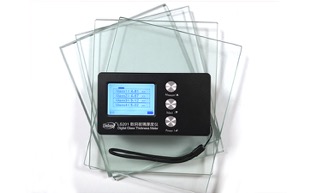
The structure of dimming glass is a new type of special optoelectronic glass formed by compounding a liquid crystal film into the middle of two layers of glass and bonding them under high temperature and high pressure. Light glass has ordinary glass
And electronically controlled curtains. It also has the characteristics of safety glass, as well as privacy protection.
Dimmable glass has the following characteristics:
1. Privacy feature: users can adjust the transparent or opaque state of the glass at any time, the response speed is fast, and instant invisibility can be achieved within 1/10 second. It is also used in buildings that require confidentiality or privacy protection. The window glass made of it is as convenient as curtains with electrical control devices.
2. Safety: When broken by impact, glass fragments stick to the film in the middle, and there will not be any injuries caused by glass fragments splashing.
3. Power saving characteristics: transparent when power is on, opaque when light is off, and light is abundant under the condition of protecting privacy.
4, environmental protection characteristics: dimmable glass can shield more than 98% of ultraviolet light, can protect indoor furnishings from fading, aging, etc. due to ultraviolet radiation, can also protect personnel from diseases caused by excessive ultraviolet radiation.
5. Energy saving: The heat insulation performance is above level 2.
6. Sound insulation characteristics: The light-adjusting film and film in the middle of the light-adjusting glass have sound damping effect, which can effectively block all kinds of noise up to 38 dB, even exceeding the hollow sound-proof glass.
The sound insulation performance is related to the thickness of the glass. The glass thickness or the thickness of the glass air layer shall be measured with a glass thickness detecting instrument LS201. There are two modes of automatic measurement and manual measurement, which can accurately test the thickness of insulating glass of various specifications.
How to use automatic mode:
1. Press the “Power” key to turn on the machine, and the automatic mode will be displayed.
2. The back of the instrument is tightly flat against the surface of the glass to be measured. Press the “Measure” key shortly, the instrument enters the measurement state, and the results are displayed.
3. Long press “Select” key to set automatic or manual mode
4. There is no key operation for 10 minutes, the instrument will automatically shut down.

What is dimming glass
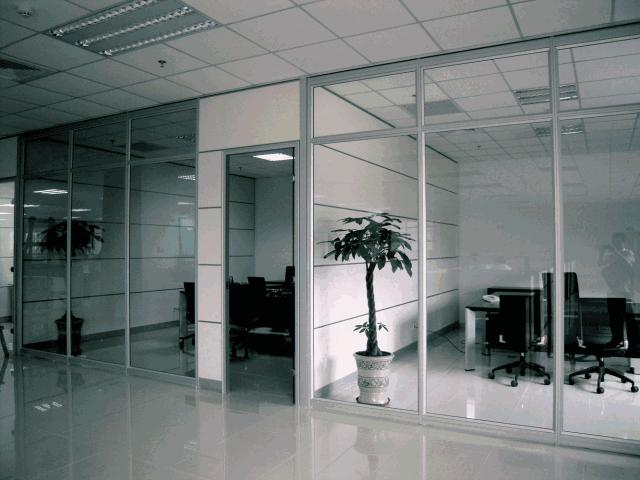
What is dimmable glass?
Smart dimmable glass is a layer of liquid crystal film sandwiched between two layers of glass. The liquid crystal film is covered by a PVB film at the center, and then placed in an autoclave. In addition to all the application characteristics of glass, smart dimmable glass also has a privacy protection function.
Specifically, dimmable glass has the following functions:
Privacy protection function
The biggest function of dimmable glass is privacy protection, that is, the user can adjust the transparent or opaque state of the glass at any time.
Intelligent dimmable glass, also known as electrochromic glass, controls the discoloration and color depth of the glass by controlling the current of the electrochromic material in the glass interlayer, which can adjust the light transmittance of the glass and the sunlight entering the room in a wide range. The intensity makes the room soft and comfortable. Because of its adjustability, smart dimmable glass is also used in buildings that require confidentiality or privacy protection. The window glass made from it is as convenient as curtains with electrical control devices.
Projection function
Smart dimming glass is also an excellent projection hard screen. The projection effect is outstanding under the right light environment. In the office environment, both dimming glass can be used as a block of the space, and the projection needs can be realized, which facilitates team communication and communication.
security function
Smart dimmable glass also has all the advantages of safety glass, including the safety performance of preventing debris from splashing after rupture, good impact strength, sound insulation and heat insulation, and can block more than 99% of ultraviolet rays; due to the use of laminated glass manufacturing process, The film in the light glass firmly bonds the glass, so that when the dimming glass is broken by impact, the glass fragments stick to the middle film, and the glass fragments will not cause injuries.
Protective function
The dimming film and film in the middle of dimming glass can shield more than 90% of infrared and ultraviolet rays, shielding infrared rays to reduce heat radiation and transmission, and shielding ultraviolet rays can protect indoor furnishings from fading and aging due to ultraviolet radiation. Protect indoor people from direct sunlight and related diseases; the light-adjusting film and film in the middle of the light-adjusting glass have sound damping effect, which can effectively block all kinds of noise.

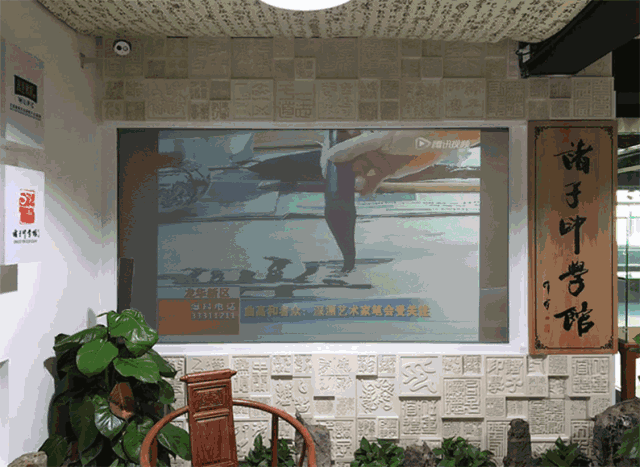
What do you need to pay attention to atomized glass_Attentions of atomized glass
“Atomized glass” I believe everyone has heard of it. Atomized glass has been widely used in our lives. In a literal sense, the atomized glass is a glass form in which the surface of the glass is matte. At the same time, the atomized glass can realize the change of transparency through the adjustment of current and voltage. Once such high-tech glass products are on the market, they have received unanimous approval and praise from construction businessmen and everyone. Although atomized glass is widely used, there are also matters that require our attention when we use atomized glass. So today, Xiaobian has compiled some information for everyone to let us know what are the main precautions when using atomized glass.
The precautions when using atomized glass are mainly divided into the following two points: 1. It is best not to be exposed to the sun for a long time. Although this glass material can achieve flexible switching between transparent and opaque states, if it is exposed to the sun for a long time, Some molecular structures on its surface will also change slightly. In addition, the color of the glass surface will change, and the original colorful colors will no longer exist. Therefore, this kind of atomized glass should be installed indoors or some places where the sunlight cannot be directly exposed. This can not only preserve the advantages of the glass, but also maintain the integrity of the entire glass state.

The surrounding temperature used must be kept below 50 °
The material of glass itself has good high temperature resistance, but the inside of the atomized glass is equipped with some special liquid crystal molecules. The high temperature resistance of these liquid crystal molecules is not very good. If the surrounding use is too high, If it does, it will cause certain damage to the molecules of this substance, the internal structure of the liquid crystal molecules will change, and the basic properties of the entire glass will also change. Therefore, it is best to maintain the ambient temperature during use. Below 50 °.
3. As the atomized glass is adjusted by current, the glass must not be immersed in water or exposed to water in large format, otherwise it will threaten the safety of users.
The above are the places to pay attention to when using . Do you all know? Be careful when using it!
. Do you all know? Be careful when using it!
Spec of Yuguang Adhesive Smart Film
Connect Busbar for Smart PDLC Film
What are Switchable Smart Glass Windows?
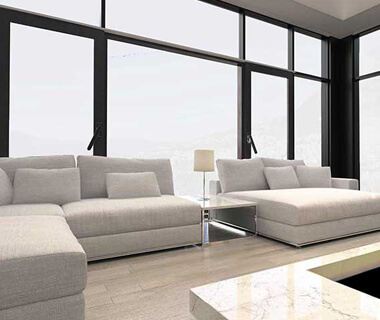
Smart Window, Switchable Smart Glass Windows or even Switchable Windows are all broad terms used to describe a PDLC Switchable product installed in a window application. As you may appreciate, this doesn’t really narrow much down with all the Switchable product variants available and the numerous potential window applications they can be used for. Widely speaking, Switchable Glass is used in a window application for privacy requirements, as privacy is often an issue with transparent glass windows that can easily be seen through – as is the traditional point of windows. Conventionally, window privacy has been dealt with using the likes of blinds and curtains, all bringing their own set of limitations and challenges. Switchable Smart Glass, on the other hand, offers a far superior solution to privacy, often being described as ‘The Future of Window Privacy’.
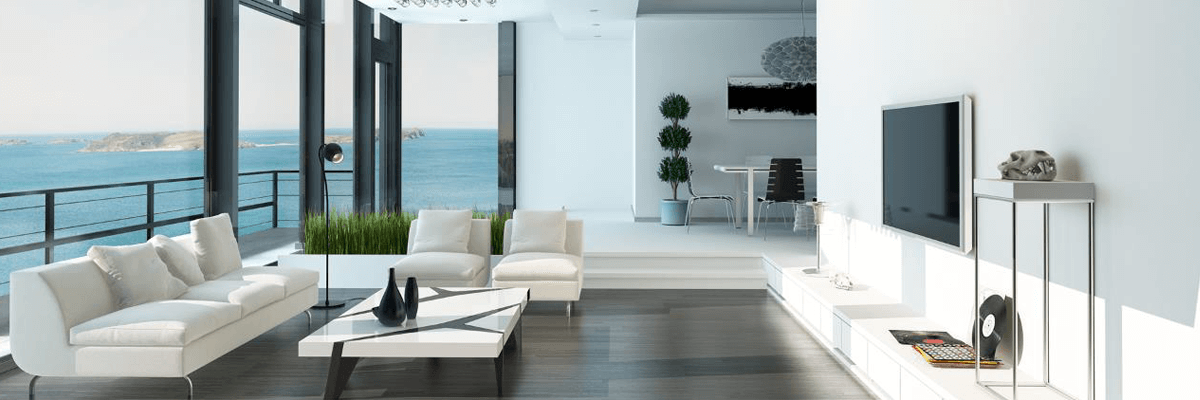
Smart Window helps to open up worlds of possibilities when it comes to creative interior design that can be practical, functional and stylish. With applications ranging from incredible rear projection retail window displays to ‘smart home’ innovations that transform your living space, Switchable Smart Glass windows are a versatile and effective solution to a range of needs.
How does Smart Window Work?
Smart Window work in the same way to most of our products, which function by integrating a PDLC layer into the product that covers the glass surface. Unlike our competitors, this coating covers the surface edge to edge with no gap via a proprietary manufacturing process developed exclusively by us. The various ways in which the PDLC coating is bonded varies from product to product depending on the level of layer protection needed, with some products encasing it inside the glass product, such as with our Switchable Smart Glass Double Glazed Units, whereas other products are manufactured by coating the layer down directly onto the glass. This layer is then wired up to a power source, which can vary from mains power to battery power depending on the requirements, allowing the product to change its state from frosted to clear on command via an activation method of the customer’s preference. When an electrical current is sent through the film, it changes from frosted to clear instantly as the crystals in the PDLC layer polarise, allowing more light to penetrate the surface as the glass changes to transparent.
Switchable window Advantage:
Due to the overwhelming benefits seen with Smart Glass DGUs, the window applications it can be used for are immense, including but not limited to External Smart Glass Windows, Smart Glass Bi-Fold Doors and even Smart Glass Skylights. In fact, most external window applications can accommodate Smart Glass DGUs to their benefit as the most appropriate Smart Glass product for the application.
Toughened Switchable Glass is, on the other hand, appropriate for internal window applications. This product, which consists of toughened glass with a PDLC layer bonded directly to the surface, is one of the cheaper options from us, but its uses are exclusively limited to internal applications. Internal windows are indeed a common application of Switchable Smart Glass and as such, Toughened Smart Glass is by no means an unpopular product. However, even its internal uses are limited to dry environments that do not demand extra safety compliance. It also can leave the PDLC layer exposed to physical damage, which could pose a potential risk to the product. Toughened Smart Glass is a popular best-selling product, but its applications in a window application are restricted due to its limitations.
Switchable Smart Glass Window Case:
1. Switchable Smart Glass Window in Healthcare
The PDLC layer protection makes it extremely easy to maintain, allowing you to clean it as you would any other glass and making it perfect for applications involving children, healthcare, or any situation where a high level of cleanliness is not only important but difficult to achieve. Laminate Switchable Smart Glass also offers other advantages over Toughened Switchable Glass, specifically its sound insulating properties, which naturally aren’t as good as DGUs, but due to composition of Laminate Smart Glass, are far superior to the sound insulating properties of Toughened Smart Glass; a significant advantage for a privacy product.
2. Switchable Smart Glass in Retail Store
Smart Windows offer an impressive way to display items and launch new products or offers in-store. By keeping the items behind a Toughened Smart Glass window, retail stores have come up with ingenious ways to create a customer journey by unveiling their featured products or craft, operating the Smart Glass via a timer, button, motion sensors or even voice commands. Coupled with Pro Display’s projection expertise, we are able to offer these Smart Glass Windows as interactive projection screens as well, allowing the store to build an immersive and effective product display that wows. However, whilst Toughened Switchable Glass is indeed used to form the foundations of this product, there are additional complex manufacturing processes involved in creating Interactive Switchable Smart Glass Projection Screens, naturally making that particular product more expensive than standard Toughened Smart Glass.
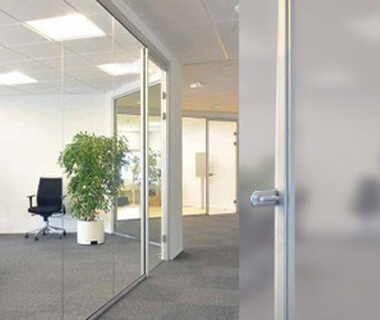
Switchable PDLC film and smart glass are an unstoppable revolution in the glass industry, and the use of architects, homeowners, and builders is constantly escalating. They enjoy the benefits of privacy, security, energy-saving, and ease of installation. Just by using the remote control, the switchable glass film changes from transparent to opaque.

Procedures to Installation of switchable PDLC film / Glass:
Step1: Connect Bus bar to Switchable Film
Broadly speaking, a bus bar is a type of conductive rod, bar or strip.
In contrast to smart films, bus bars are a type of conductive copper tape that is affixed to one or both edges of a PDLC film before being laminated between two pieces of glass.
The copper strip acts as a conduit for a step-down (48 / 60V AC) current, which activates the liquid crystal in the film. The current is diffused through a conductive indium tin oxide coating on the surface of the surrounding PET film.
Some Smart Film panels may require multiple bus bars to ensure a complete and even distribution of current.
Double strand
Wires are soldered to either end of each bus. They are double (or double) wires. This apparent “dual-effect” is to compensate when the wires come off or come off during panel installation. Depending on your requirements, busbars can be applied to the long or short sides.
Depending on their proportions, some panels may require two bus bars.
Acceptable locations of bus bars on smart film panels.
Step2: Tools Preparation
- Nitrile gloves (or other non-powdered, lint-free gloves)
- Glass cleaner (non-ammonia based)
- Silicone adhesive sealant
- Applicator squeegee/Glass scraper
- Rubber Roller
- Lint free cloth (microfiber)
- Low adhesive tape (painters tape)
- Packaging tape
- Wire mold / trim
- Ladder (if necessary)
- Electrical tester (switch cord)
- Soldering iron
- Electrical wire leads

Inspect each piece of the film immediately, without wrong sizes, damaged edges and then proceed installation.
Step3: Cleaning window or door existing glass
Use a window scraper or blade to remove and dirt/blemishes from the glass surface. Repeat it without any dirt/blemishes. And then Spray the glass with glass cleaner and clean with a absorbent cloth to completely clean and dry. Then Using a lint-free cloth, wipe the glass surface until it is dust-free.
Step4: Cleaning the switchable PDLC film
Using a lint-free cloth, wipe down the protective liner on the cling side of the film to remove any dust.
Step5: The size of tearing the covered film
Put on clean nitrile protective gloves and using the edge tab of the label to remove the first 100mm(4″) of the protective liner covering the cling side. Make sure that dust does not fall onto the cling Sid
Step6: Sticking film
Align the edge of the Film with the top edge of the glass. When in position, run your finger along to press down and fix the top edge(the adhesive strip will hold the film in position).e.
Step7: Sticking cautions
Gradually pull away from the protective liner and allow Film to slowly adhere to the glass surface under its own pressure. Using the soft edge squeegee move down Film working in horizontal lines left to right to disperse any air bubbles. If any small bubbles are still visible, carefully lift the film and let it sit back down under its own pressure. If any small bubbles are visible, carefully check for any dust particles. If so, use adhesive tap and carefully remove the dust particles. Otherwise, carefully lift Film and let it sit back down under its own pressure (while using the squeegee).
Repeat the above process until you have a bubble-free installation (for bubbles near the edges).
Step8: Soldering and circuit connection
Once the Film is in place, connect the Clips-On electrode to the transformer. For best results, use cable guides along the edge of the window.
Step9: Testing
Connect the transformer to the power source and test Film(switching from opaque to clear).
Step10: Silicone sealant of the edge
For additional security or when using film in a high moisture environment use non-acidic based silicone(e.g. GE-83)along the edges of the film about 5mm, when it dries(about 3 days) later to power on and use the switchable film.
Step11: With 3M glue to seal the edge
Notice:
1. No water using in installation unless for clean the glass.
2. The needed film size is 2-3mm less than the glass size to fit installation.
3. All should be done under a dust-free working environment.
4. Remember to use silicone sealant glue.

Switchable Smart Glass is the popular term used to describe electronically switchable glass. A small electrical current changes the opacity of the glass pane so that once can control the transparency of the surface. This is “electric frosting” can do via a wall switch, light sensors, movement sensors or remote control. The fact that the methods of control range from basic a dimmer switch and to mass integration into a building’s or vehicle’s intelligent control system mean that there are hundreds of options available to architects and engineers today.
Typically Switchable Smart Glass refers to an entire glass sheet that was manufactured specifically for this purpose but some suppliers offer the cheaper alternative of pasting electronically-controlled laminates into existing surfaces. Such laminates do tend to have a lower lifespan and are not recommended for commercial applications. The term sometimes also applies to when an electro-chromatic function is added to plastic polymers for a similar transparency control.
Building Facades, Skylights, Doors, and Windows
Switchable Smart Glass surfaces have the benefit of controlling both privacy and the amount of light that is allowed into the interior of a building. Allowing more natural light into the building reduces heating requirements in winter and allowing less light into the building in summer reduces glare as well as cooling costs. Apart from lower building energy usage, the switchable glass provides an elegant solution to privacy control. Intuitive Systems can be installed to automatically respond to light levels or individual installations can be controlled by the room occupant.

Hospitality Interiors
Hospitality suppliers often use Smart Glass for privacy screen between areas (Bathroom/bedroom), external windows, doors as well as toilet or shower cubicles. Glass partitioning in larger areas such as conference rooms, bars, and restaurants is often installed with flexibility in mind and features such as mobile screens and projection screens commonly provide this flexibility.
Medical Interiors
Switchable Smart Glass is inherently easier to clean and more hygienic than traditional blinds and will often be used to create modern post-operation and isolation of single-bed units. In such delicate environments, extra care must be taken to protect those who are most vulnerable to infection, patients and healthcare personnel. In examination areas, privacy on demand is a concept that allows practitioners to select opacity levels of the glass walls to suit the needs of the moment.
Some manufacturers can even tailor the units to suit varying healthcare requirements such as fire-rated, x-ray proof and impact-resistant glass.
Marine and Aviation Applications
The glass itself is often too heavy to be considered for wide-scale applications in Marine and Aviation engineering so most “Smart Glass” is actually more accurately described as a “Smart Polymer”. These lightweight cousins of smart glass still operate on the principle of electronically switchable opacity and include windows, partitions, and cabin dividers.

Rail and Car
The two main concerns when installing electric glass partitions on trains, trams cars, and similar ar driver privacy and security.
Kiosks and Promotional Cubicles
A kiosk with controllable opacity allows for dramatic effect whether you are displaying a large product such as a car or are projecting visual media onto the walls of your display. Different portions of such cubicles can be controlled separately and can add an enticing element to launches, information-based displays, and sales points.
Click here to find out more about our products or contact us today to receive a free quote.








